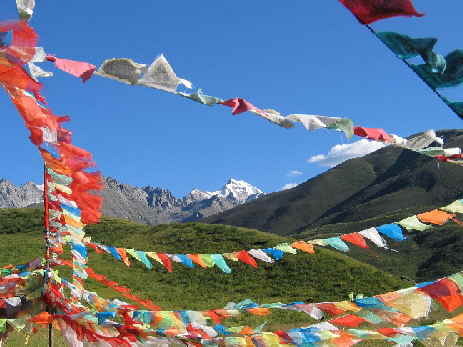
John W. asks: I’m wondering about the role and efficacy of prayer. Why and how do we pray in a non-theistic world-view? When one sees intercessory prayers (Please help me kill my enemies or don’t let it rain tomorrow for my picnic or please take away this disease you’ve give me) as silly and empty, what is left? I find myself asking every day that all beings might have happiness and the causes of happiness but I guess I have doubts and questions about the mechanism. Why am I doing this and is it really helping anything?
Lama Surya Das: Prayer is a very potent, profound and powerful contemplative practice, throughout history universally practiced around the world in various ways. Of course it can help! But help who, what, when and in what way(s)? All these aspects are worth investigating. For example, what is the motivation behind your prayers? Are you just praying for yourself in a selfish way, or for instant gratification, or worse— to get ahead at the expense of others? Why are we doing this— or anything— is often an inquiry worth making.
Buddhism is a non-theistic wisdom tradition more than a faith or a theocentric religion, and yet it too utilizes the power of prayerful intention and humbly requesting for help in many of its various schools and lineages. It takes humility to lower ourselves and our guard, admit we’re not all-powerful and totally knowledgeable and in control, and ask for help. Many Buddhist pray for better rebirths, for healing, or for their aspirations to be fulfilled and swiftly accomplished, among other things.
Cultivating loving-kindness, as in the classic Metta practice— wishing, again and again, with folded hands and deeply focused concentration— we use Buddha’s own words, from the Metta Sutta: “May all beings be happy, peaceful, joyful and at ease”. Is this not a form of prayer? And yet we are not exactly praying to Buddha to do it for us.
There are more than a dozen kinds of prayers, besides theistic-style intercessory prayers or merely praying for what you want. There are prayers of thanks, of praise, mantra prayer, wordless centering prayer akin to meditation, and so forth. The word for prayer in Tibetan is mon-lam, which means ‘aspiration-path’. It’s as if our strong intention and concentrated, focused mental powers help effect actions congruent with their purpose, for every action has a reaction— and praying is an action involving body and mind, voice, breath and energy, heart and soul.
Benedictine Brother David Steindl-Rast says that “Gratefulness is the heart of prayer.” St. Paul advised us to make every breath a prayer.
Every mindful moment is like a crystal clear bead on your contemplative prayer mala/rosary.
Submitted by John W. via www.surya.org on January 12, 2011
1770 Massachusetts Ave #127
Cambridge, MA, 02140
